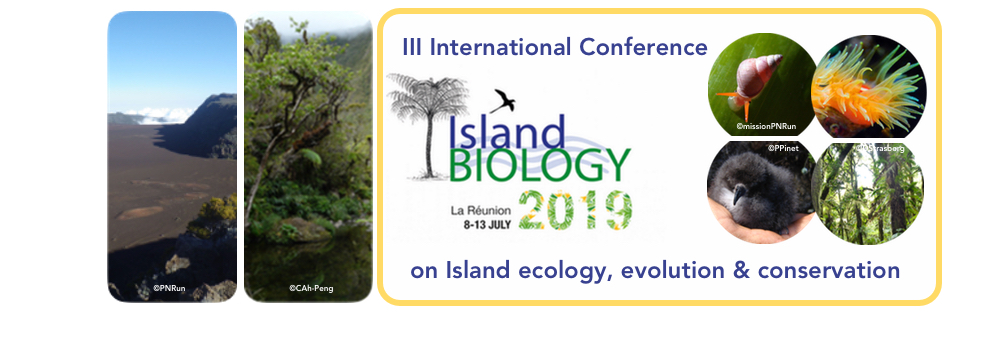The spatial configuration of rhodolith seabeds in oceanic islands provides an ideal system to assess whether environmental drivers regulate the structure and functioning of rhodolith seabeds across a depth gradient. Similar to altitude in terrestrial habitats, subtidal habitats experience abrupt environmental gradients (e.g. light, temperature, water motion, etc.) across narrow vertical (depth) scales. In this study, we characterized the structure of rhodolith habitats (size and shape of nodules) as well as their associated biota (fauna and flora communities) across depth scales in three Eastern Atlantic oceanic islands: Madeira (Portugal), Gran Canaria (Canary Islands, Spain), and Príncipe (Democratic Republic of São Tomé and Príncipe). A characterization program was performed in rhodolith beds at two sites and three different depths in the selected islands with subtropical waters (Gran Canaria and Madeira) and tropical waters (Príncipe). Samples were taken using SCUBA at each of the three depth strata. On each stratum, n=5 random replicates (25 x 25 cm) were taken each time, by collecting all rhodolithic nodules up to 5 cm deep. Rhodolith nodules were mainly larger at intermediate depths in Gran Canaria (25 m respect to 18 and 40 m) relative to the other depths; meanwhile sizes increased with depth in Madeira (16 m to 34 m) but decreased across bathymetrical gradient in Príncipe (5 and 10 m respect to 20 m). Most rhodoliths were quasi-spheroidal across depths in all studied islands. Still, the percentage of spheroidal rhodoliths was slightly lower at deeper strata, especially in Principe sites. The structure and functioning of the community assemblages changed consistently with bathymetry but overall with the additional substrate provided by the epiphytic associated biota (mainly macroalgae). Our data also suggested that different environmental drivers such as wave-induced turbulence (in upper layer) conditioned by geographical position of rhodolith beds in each island and irradiance attenuation (in the lower layer) can regulates the structure and functioning of rhodolith habitats across depth gradients in the studied islands.

|
|
|
|
Environmental drivers effects on the structure and functioning of rhodolith marine habitats in Central-Eastern Atlantic Islands
1 : Biodiversity & Conservation Research Group
(IU-ECOAQUA)
Scientific & Technological Marine Park, Universidad de Las Palmas de Gran Canaria, Crta. Taliarte s/n, 35214 Telde -
Spain
2 : Marine Plant Ecology Research Group, Centre of Marine Sciences
(CCMAR)
Campus de Gambelas, 8005-139, Faro -
Portugal
3 : Observatório Oceânico da Madeira
(OOM)
Edifício Madeira Tecnopolo, 9020-105, Funchal, Madeira -
Portugal
4 : Príncipe Island UNESCO Biosphere Reserve
* : Corresponding author
Cidade de Santo António do Príncipe -
São Tomé and Príncipe
|
| Online user: 58 | RSS Feed |

|
 PDF version
PDF version